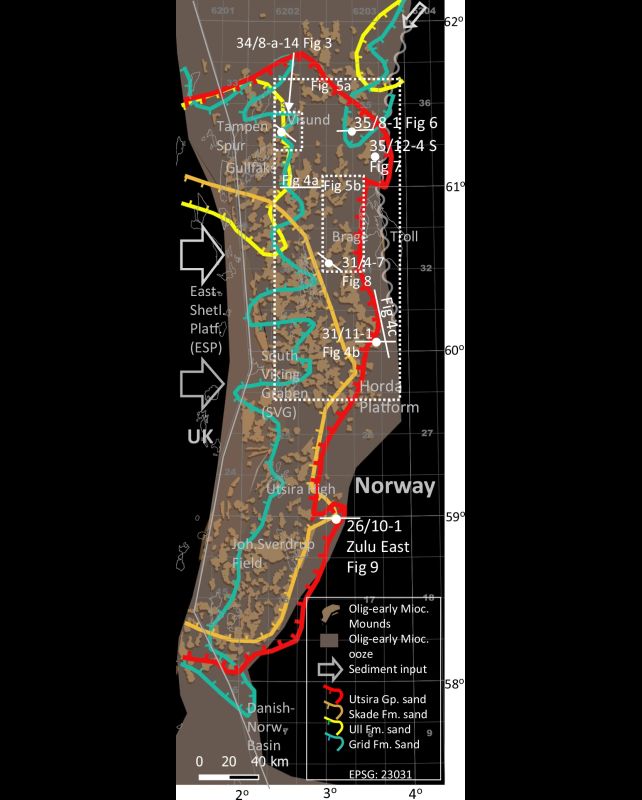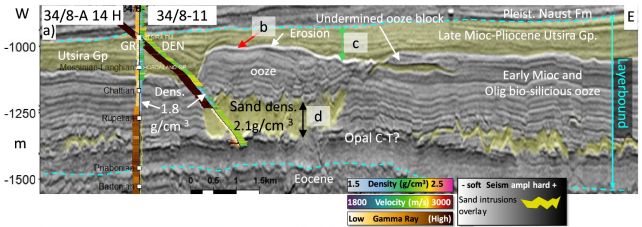Deep beneath the waves of the North Sea, the seafloor is behaving in an unexpected way.
There, scientists have discovered hundreds of vast sand mounds, some on the scale of several kilometers across, that, according to a release from the University of Manchester in the UK, “defy fundamental geological principles”.
These mounds pile atop structures known as sinkites, the result of a process called stratigraphic inversion, and never before have they been found in such large numbers.
Related: Mysterious Holes on The Ocean Floor Have a New Explanation
“This discovery reveals a geological process we haven’t seen before on this scale,” says geophysicist Mads Huuse of the University of Manchester.
“What we’ve found are structures where dense sand has sunk into lighter sediments that floated to the top of the sand, effectively flipping the conventional layers we’d expect to see and creating huge mounds beneath the sea.”

Geological layers are expected to follow a certain order consistent with the linear progression of time. Older layers are towards the bottom of the formation, growing progressively newer closer to the top, in the order of deposition.
Stratigraphic inversion, or reverse stratigraphy, occurs when younger layers sink down, and the older ones rise to the top of the formation, and there are a number of ways this can happen, from rockslides to tectonic movements.
Huuse and his colleague, geophysicist Jan Erik Rudjord of oil company Aker BP in Norway, identified the sinkites at the bottom of the North Sea using detailed seismic data. When acoustic waves travel through Earth, they propagate and reflect differently from materials with different density properties. Scientists can then analyze the seismic data and map the different types of rock the waves traveled through.
In this data, Huuse and Rudjord found that large parts of the North Sea floor appeared to be upside down, with younger layers of sand buried beneath older layers.
These younger layers are denser and heavier than the softer, lighter material that was below, so over time, they sank down, displacing the older, more porous material and forcing it upwards, where it sits atop the denser sinkite. The researchers have dubbed the porous rafts ‘floatites’.
They believe this process probably took place around the boundary between the Miocene and the Pliocene, about 5.3 million years ago. The older material consisted of a lightweight, rigid, and porous layer predominantly made up of microscopic marine fossils, with a heavier layer atop.

Disruptions such as earthquakes could have broken up the upper layer into sand, which sank down, switching places with the floatites. Over the ensuing millions of years, seafloor sediment dusted the entire structure over, producing the undulating seafloor that can be found there today.
Now, the team are working to improve and validate their interpretation – one that could help better understand Earth’s crust under the ocean, where it is weak and where stable, and the processes that can dramatically alter these properties.
“This research shows how fluids and sediments can move around in the Earth’s crust in unexpected ways. Understanding how these sinkites formed could significantly change how we assess underground reservoirs, sealing, and fluid migration – all of which are vital for carbon capture and storage,” Huuse says.
“As with many scientific discoveries there are many skeptical voices, but also many who voice their support for the new model. Time and yet more research will tell just how widely applicable the model is.”
The research has been published in Communications Earth & Environment.


5 Comments
https://shorturl.fm/zIqzP
https://shorturl.fm/NWkjY
https://shorturl.fm/LXJF8
https://shorturl.fm/Ev49l
https://shorturl.fm/bHumy